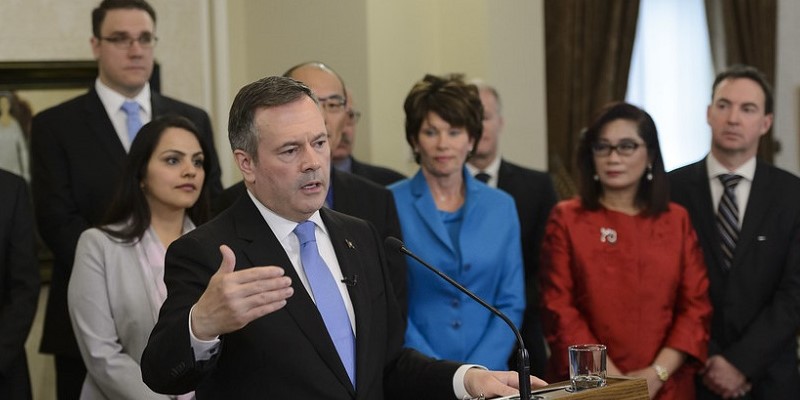Alberta’s finances still rapidly eroding

The Government of Alberta has been burning through financial assets at an alarming pace ever since the 2008 financial crisis. While the provincial economy quickly recovered from that short-but-deep recession, successive governments still ran deficits in all but one year since, including during the height of the energy boom.
The recent decline in global oil prices exacerbated the province’s fiscal issues, leaving the province with difficult choices to be made.
Indeed, the Kenney government has made some tough choices. Its inaugural budget marked a new direction for the province in terms of program spending. For much of the past two decades, government program spending increases have exceeded the combined rate of inflation-plus-population growth, so that the province’s per-person program spending exceeded that of neighbouring British Columbia by roughly 20 per cent (the current budget plan would bring Alberta roughly in line with B.C. over time).
The choice to introduce small nominal program spending reductions is a notable departure from that approach, and was largely continued in the Kenney’s government’s recent second budget.
But have the reductions been enough?
As a starting point, let’s consider the scale of Alberta’s fiscal challenges. The first chart below shows the change in Alberta’s net financial assets since 2007/08 (roughly speaking, a government’s net financial assets are the difference between their liabilities and the financial assets they own—for instance, in the Heritage Fund).
Today, all 10 provincial governments have negative net financial assets (net debt). As we see above, Alberta was (until recently) in the unusual position of having a large stockpile of net assets, which peaked at $35 billion. As the chart shows, the province’s net financial assets began to decline in 2008/09 and the province continued to draw down those assets right through the peak of the energy boom. By the time oil prices collapsed began in late-2014, the province’s net financial assets had mostly eroded. In fact, the recent budget projects that by 2022/23, the province will have accumulated $46.6 billion in net debt—an $81 billion decline in 15 years ($5.4 billion per year).
And this assumes that the projections all come to pass.
This rapid debt accumulation could force even more difficult choices on future governments, particularly if this government fails to balance the budget on schedule. More debt means higher annual debt-servicing costs.
The second chart above shows that in 2007/08, the government in Edmonton spent $214 million servicing the province’s debts (even when assets exceeded liabilities, it still carried some debt to finance infrastructure and so forth). By 2019/20, that climbed to just over $2 billion. And at its current pace, the annual cost of servicing Alberta’s debt is projected to approach $3 billion by 2022/23. For context, that’s nearly half of what the province plans to spend on social services that year.
The long-term erosion of Alberta’s financial assets has impacted both current and future Albertans. Even small deviations from the trajectory laid out in the latest provincial budget could have serious consequences for Alberta finances down the road.
Author:
Subscribe to the Fraser Institute
Get the latest news from the Fraser Institute on the latest research studies, news and events.

